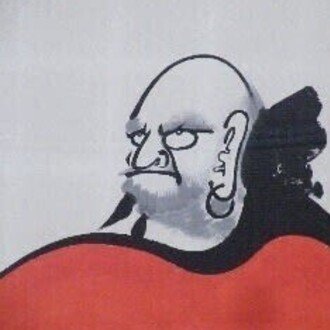
古代の五行思想は、日常に根をはっている。【一茶庵 稽古追想】 The ancient Wuxing thought is rooted in everyday life.
煎茶を学んでいると「東洋思想」という難解な自然界の摂理のような事象に出くわす。
While studying sencha, I come across an esoteric nature-like providence called "Eastern Thought".
煎茶をより深く楽しむために古代中国の思想を少し理解しておく方が、五感に響く度合いが違うような気がしている。
I feel that a little understanding of ancient Chinese thought in order to enjoy sencha more deeply has a different degree of impact on the five senses.
この「東洋思想」は難解極まりない学問のように感じるが、実は日常に即したものであるのは言うまでもない。たとえば「暦」「季節」「時間」「方角」「色」「体の臓器」などいろんなことにあてははめられている。
This "Eastern thought" feels like an extremely difficult scholarship, but it goes without saying that it is in line with everyday life. For example, "calendar", "season", "time", "direction", "color", "body organ", etc. are applied to various things.
古代中国では、自然界のあらゆるものを「陰」と「陽」にわけていた。その陰陽思想は、五行思想につながっていった。五行思想は、自然界が「木」「火」「土」「金」「水」の5つの要素で成り立っているというものである。この5つの要素が循環することによって万物が生成され、自然界が構成されていると考えられたわけである。
In ancient China, everything in nature was divided into "yin" and "yang." The Yin-Yang idea led to the Five Elements idea. The Wuxing idea is that the natural world is made up of five elements: "tree," "fire," "earth," "gold," and "water." It was thought that all things were created by the circulation of these five elements, and that the natural world was composed.
われわれの身近なこととして「十干十二支」などもそのひとつ。十二支は生まれ月をあらわしている。古代中国では天空の方角を12に分け、それぞれの方角を記号として動物の名を付けたといわれている。この十二支と十干を組み合わせると60種の組み合わせが成り立つ。それが年にあてはめると60年になる。60年経つと生まれた年の干支に戻ることから、「還暦」といわれるわけである。赤子にもどることから赤いチャンチャンコを着る慣習につながっている。
One of the things that is familiar to us is the "Twelve Zodiac". The zodiac represents the month of birth. In ancient China, it is said that the direction of the sky was divided into 12 and each direction was used as a symbol to name the animal. Combining the zodiac signs and the heavenly stems makes 60 kinds of combinations. If that applies to the year, it will be 60 years. It is called the "60th birthday" because it returns to the zodiac of the year of birth after 60 years. Returning to a baby has led to the custom of wearing red chanchanko.
日常の身のまわりには五行思想が古代からしっかり根をおろしている。日頃の所作、作法、動作などにも見事に反映されている。それは、難しいことではなく自然で単純で合理的な動きや考え方につながっているような気がする。
The five elements of thought have taken root in everyday life since ancient times. It is reflected in the daily behavior, manners, and movements. I feel that it is not difficult, but leads to natural, simple and rational movements and ways of thinking.
煎茶を楽しみながら「五行思想」を学ぶ。心も体も引き締まる思いである。
Learn "Five Elements Thought" while enjoying sencha. I feel that my mind and body are tightened.


レポート & 写真 / 渡邉雄二 トップ写真 / 五行思想画像より転載 設え / 文人会一茶庵
Reported & Photos by Yuji Watanabe
Top Photo from Five Elements Thought
いいなと思ったら応援しよう!

